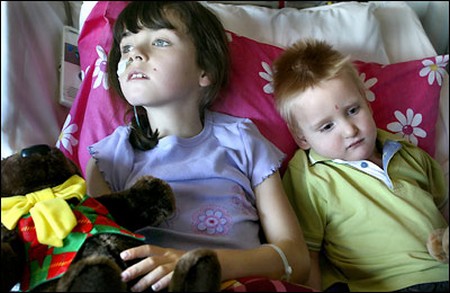How to Deal with a Child with Epilepsy
By Roberta Southworth on Apr 17, 2010 with Comments 0
A child with epilepsy tends to have recurrent seizures that are caused by abnormal bursts of electrical activity in the brain. The condition has several different variations, resulting in more than twenty types of seizures. Certain types of epilepsy don’t result in seizures but affect the child in other, milder ways. A single seizure is not normally a sign of epilepsy. Some isolated childhood seizures are caused simply by a high body temperature. Medical investigation is the only way to identify the condition. Epilepsy affects about one in two hundred of the population, and one in fifty may have an epileptic seizure at some stage in life. These seizures are neither infectious nor a sign of mental illness.
Epilepsy has many different causes, including brain damage as a result of a birth injury or accidental injury, infection (such as meningitis or encephalitis), tumors, and hormonal problems. In many instances, the specific cause cannot be accurately pinpointed. Epilepsy can start at any age, but it frequently starts in the preschool years. Most commonly, the first seizure occurs before the age of twenty. The frequency of seizures varies from once in a lifetime to several in an hour.
Seizures can be triggered by many factors, depending on the particular child. Common triggers include flashing lights, sudden loud noises, lack of food or sleep, stress, anxiety, and infection. Following are two main types of seizures:
- Petit mal. This mild seizure occurs only for a second or so. Although the child loses consciousness momentarily, she remains standing (or seated). During the episode, the child will look blank and stare into space; she may also blink or twitch slightly. As soon as the petit mal seizure is over, the child will continue as though nothing has happened. Some children have several in one day.
- Grand mal. With this major type of seizure, the child will lose consciousness, her body will stiffen and jerk, her lips may develop a blue color, and she will fall to the ground. She may also wet and soil herself. The most important thing you can do is protect your child from injury. Cushion her head, don’t put anything in her mouth, don’t try to pry open her mouth if her teeth are clenched, turn her on her side in order to help her breathing. Stay with your child until she has fully recovered, quietly reassuring her all the time, although she may want to go to sleep immediately after the seizure.
Medication can control—but not cure—epilepsy. Almost 80 percent of people with the condition use drugs to control or greatly reduce the seizures. The choice of drug depends on the child and the type of seizure she experiences. Doctors prefer to use one drug only, where possible, rather than a combination, and most children do not experience side effects if they take the medication in the way it is prescribed. Also, some research in neural feedback indicates that some seizure types can be avoided using this technique.
Filed Under: Family & Relationships
About the Author: Roberta Southworth is a psychiatrist by profession. She likes to help out people by writing informative tips on how people can to solve their family and relationship issues. She is currently staying in Ireland. She has 5 years of couple counseling experience.
